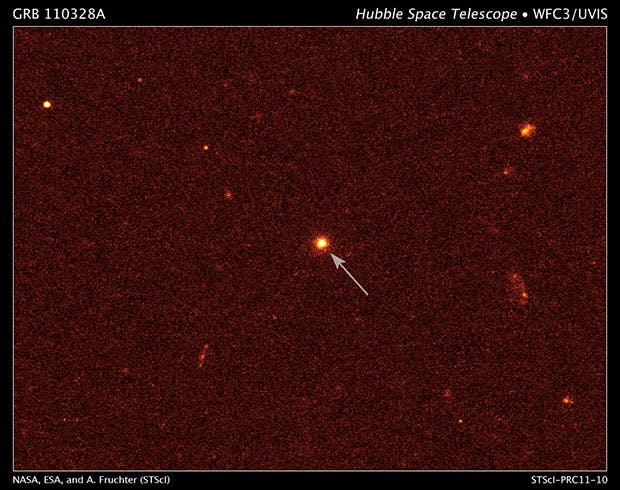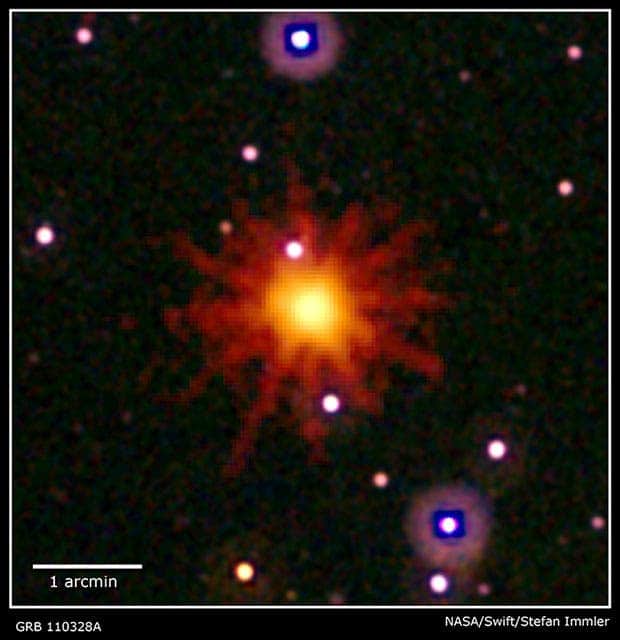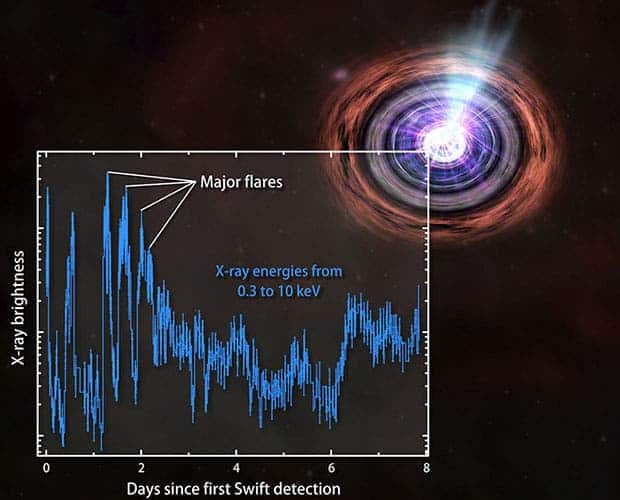The Draco constellation (which is Latin for Dragon) is located at about 3.8 billion light years from Earth; just like every dragon that has at least some common sense, it breathes fire, especially after carelessly eating a nearby star.
Rewind. A mysterious cosmic blast in the Draco constellation is causing waves that continue to be observed long after researchers believe they should have stopped. Astronomers are scrambling, trying to find an answer to this puzzling question, but they haven’t been really successful, and nothing seems to explain this unusual situation; instead of the short lived gamma ray explosions that are typically associated with the death of a massive star that last only a few hours, the explosion continues to emit rays more than a week after the event.

This is a visible-light image of GRB 110328A's host galaxy (arrow) taken on April 4 by the Hubble Space Telescope's Wide Field Camera 3. The galaxy is 3.8 billion light-years away. (Credit: NASA/ESA/A. Fruchter - STScI)
“We know of objects in our own galaxy that can produce repeated bursts, but they are thousands to millions of times less powerful than the bursts we are seeing now,” said Andrew Fruchter, an astronomer at the Space Telescope Science Institute in Baltimore. “This is truly extraordinary.”

Images from Swift's Ultraviolet/Optical (white, purple) and X-ray telescopes (yellow and red) were combined in this view of GRB 110328A. The blast was detected only in X-rays, which were collected over a 3.4-hour period on March 28. (Credit: NASA/Swift/Stefan Immler)
Most galaxies, including our own, have supermassive black holes at their centers, with the mass more than a million times the Sun. But in a big galaxy, like the one we’re talking about, they can be even a thousand times bigger.
“Every spiral galaxy has a black hole at the center of it,” Paul Czysz, professor emeritus of aerospace engineering at St. Louis University, told TechNewsWorld. “At the center of our galaxy, there’s a lot of stars circulating around the black hole at the center of the Milky Way.”
Just like the Sun keeps the planets in our solar system spinning around it, a supermassive black hole does the same for a galaxy, but sometimes, it “chews” on one of the stars closest to it, thus generating the short lived gamma ray bursts I was telling you about earlier. However, this phenomenon could revolutionize researchers’ understanding of how supermassive black holes, which is quite important, considering we have one of them in the very center of the Milky Way.










